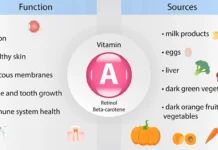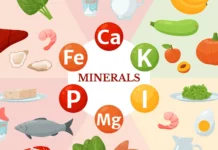In this article: all about macronutrients. Unlike the relatively small number of “bioelements” that make up the composition of living organisms, the latter are built from many diverse “building substances” that determine the external and final structure of the body and its functions. The term “structfural substance” includes all substances that make up the body, regardless of their role.
Man and animals do not produce their building materials directly from the air and from the soil under the influence of salivary energy, but accept and process ready-made, energy-rich food products.
What Are Macronutrients
Macronutrients are the fundamental components of our diet that provide the energy and building blocks necessary for the proper functioning of the human body. Comprising three essential categories—carbohydrates, proteins, and fats—macronutrients play a pivotal role in sustaining life, supporting growth, and maintaining overall health. These nutrient groups are consumed in relatively large quantities compared to micronutrients, emphasizing their significance in our daily nutritional intake.
Why are Macronutrients Important For Us
Some of the necessary building materials are contained in the food products in a suitable form for direct use by the body, while others must be prepared in advance by processing in the digestive tract. This processing is necessary due to the high molecular structure of some macronutrients and the consequent impossibility of their passage through the semi-permeable cell membranes, on the one hand, and, on the other hand, due to the structural specificity of individual animal tissues. In the alimentary organs, the macromolecular components of the food are broken down into simple building units, from which the organism produces the specific building materials it needs.
Complete food must contain all the necessary happiness for building the organism and maintaining the regulatory processes in it. A strict division of the individual components of food in terms of their role in the body (constructive, energetic and regulatory) is not acceptable, as it is currently established that protein substances, fats, and even carbohydrates participate in some typically regulatory processes.
Proteins
Belt substances are complex chemical bodies included in the composition of products of plant and animal origin. Unlike other macronutrients, proteins contain nitrogen because they are made up of different amino acids. Depending on the type and quantity of the amino acids that participate in the composition of a given protein, its biological value is also determined. Belt substances are the starting material for building the cells and tissues of the body and cannot be replaced by other substances.
Protein substances that contain in their composition a sufficient amount of all amino acids, unconditionally necessary for the body to build new cells and maintain its vital functions, are called complete proteins. Such are the proteins that are contained in products of animal origin (meat, eggs, fish and dairy products). Proteins that do not contain all the amino acids necessary for the body are called incomplete. Proteins of vegetable origin mainly belong to the inferior ones. Given that the food consists of a variety of products, each of which contains in its composition incomplete proteins, but with a mutually complementary amino acid composition, the same can be used by the body to build the tissues it needs. It is accepted that in food rations, the amount of proteins from animal origin must amount to no less than ⅓ of the total amount of proteins contained.
The body’s need for proteins depends on a number of conditions: for example, a young and developing organism needs more and more diverse proteins, which it consumes to restore dead cells and for growth. With heavy physical or intense mental work, the need for proteins increases. With medium and light physical work, especially in older age, the body requires less proteins. Body weight is also important for protein requirements. The average 24-hour protein requirement for normal work is about 100 grams for an adult. At the same time, it is accepted that the average weight of a person is 70 kg, which means that 1.5 g of protein substances are needed for 1 kg of weight.
With heavy physical work or with strong nervous and mental tension, the body’s need for proteins increases and reaches 2 g of proteins per 1 kg of weight. These average norms for the body’s need for protein substances cannot be accepted for persons from different professions without taking into account the additional factors – age, working conditions, ambient temperature and other living conditions. For this reason, it is necessary to develop separate norms for each individual group.
The oxidation of 1 g of protein substances yields 4.1 kilocalories. It is accepted to consider that the caloric value of the protein substances included in the composition of the daily food ration should amount to 12-16% of the total caloric effect.
Fats
Fats contained in food products are of animal or plant origin. Edible fats are glycerides mainly of palmitic, stearic and oleic acids. The melting temperature and consistency of the solid fats depend on the type and amount of fatty acids that make up their composition. The absorption of fats by the human body depends on their melting point. Fats with a melting point close to human body temperature are absorbed better than fats with a high melting point. When oxidized in the body, each gram of fat forms 9.3 kcal, i.e. it exceeds more than two times the caloric value of proteins and carbohydrates.
Due to their high caloric content, the body receives a larger amount of energy from relatively small amounts of fat. This circumstance is of great importance, because with very hard work associated with a correspondingly greater expenditure of energy, the necessary calories could only be obtained from a large amount of food, the reception, digestion and assimilation of which will tire the digestive organs.
The ability of fats to saturate the body has a favorable effect on an increased need for energy. Due to the weak activity of gastric lipase, fats undergo little breakdown in the stomach, which is why they stay in it for a much longer time than other macronutrients and cause a feeling of satiety. In addition to covering a large part of the body’s energy needs, fats play another important role: they are carriers and dissolvers of fat-soluble vitamins. It has been established that the absorption of carotene, especially from plant food, is favored by the simultaneous intake of fats.
With normal nutrition, 20-30% of the total caloric effect of the food taken is covered by fats, and a certain increase in their amount does not adversely affect the body. Extensive studies on experimental animals have shown that a diet completely devoid of fat causes severe malnourishment conditions, which are expressed above all in a significant reduction in their weight. Individual fats added to food prevent these disturbances to varying degrees. Numerous studies have shown that the occurrence of similar nutritional deficiencies is caused by the lack in the food of the two unsaturated fatty acids – linoleic and linolenic or only one of them.
Carbohnydrates
Carbohydrates are the main source of energy for the human body.
They are mainly contained in vegetable products and are divided into simple carbohydrates – sugars, and complex carbohydrates – starch, inulin, cellulose, and the difference between them is determined by the size of the molecule.
Sugars are substances soluble in water. They are divided into mono-, di-, trisaccharides, etc. A solution of monosaccharides can be absorbed directly from the intestine. Under the action of digestive enzymes, disaccharides are broken down into monosaccharides and absorbed as such. The ability of sugars to be easily absorbed from the intestines, quickly oxidized in the body and develop energy determines their extreme importance as macronutrients, especially in cases where the human body needs a quick restoration of energy losses. The decrease in the amount of sugar in the cow is accompanied by a feeling of hunger and fatigue.
The great importance of carbohydrates for the body is particularly clear and convincing from the fact that the sugar content in the cow is a constant value in the range of 0.08-0.10%, which is maintained by a complex regulatory mechanism. The importance of carbohydrates for the body does not end only with their energy value.
They also participate in the formation of the vitamin and fermentation systems, as well as in some intermediate exchange processes, such as the oxidation of fats. The second group of carbohydrates, which includes starch and cellulose the vine, refer to insoluble carbohydrates, which are high molecular weight compounds. Under the action of the preliminary heat treatment and then by the digestive enzymes, the starch is successively broken down into monosaccharides, which in this form are usable by the body.
Most of the carbohydrates in food are replaced by starch, which in the composition of bread, for example, participates with 40-56%, in potatoes – 18%, etc. The excess sugar in the body turns into fat and is deposited in the form of subcutaneous and internal fat accumulations.
Cellulose participates in the composition of all plant substances. A significant part of it is released in the process of the preliminary industrial or kitchen processing of the products (grinding and peeling of grains, cleaning of vegetables, etc.). Certain amounts of cellulose are, however, part of the plant food accepted by the body. Cellulose does not break down in the human digestive system and is therefore not absorbed, but it plays an important role in the feeding process by increasing intestinal peristalsis.
In the liver and muscles, part of the carbohydrates are converted and deposited as glycogen, which is used up by the body when carbohydrates are insufficiently absorbed by the latter. Glycogen also acts as an intermediate in the formation of fats from carbohydrates.














